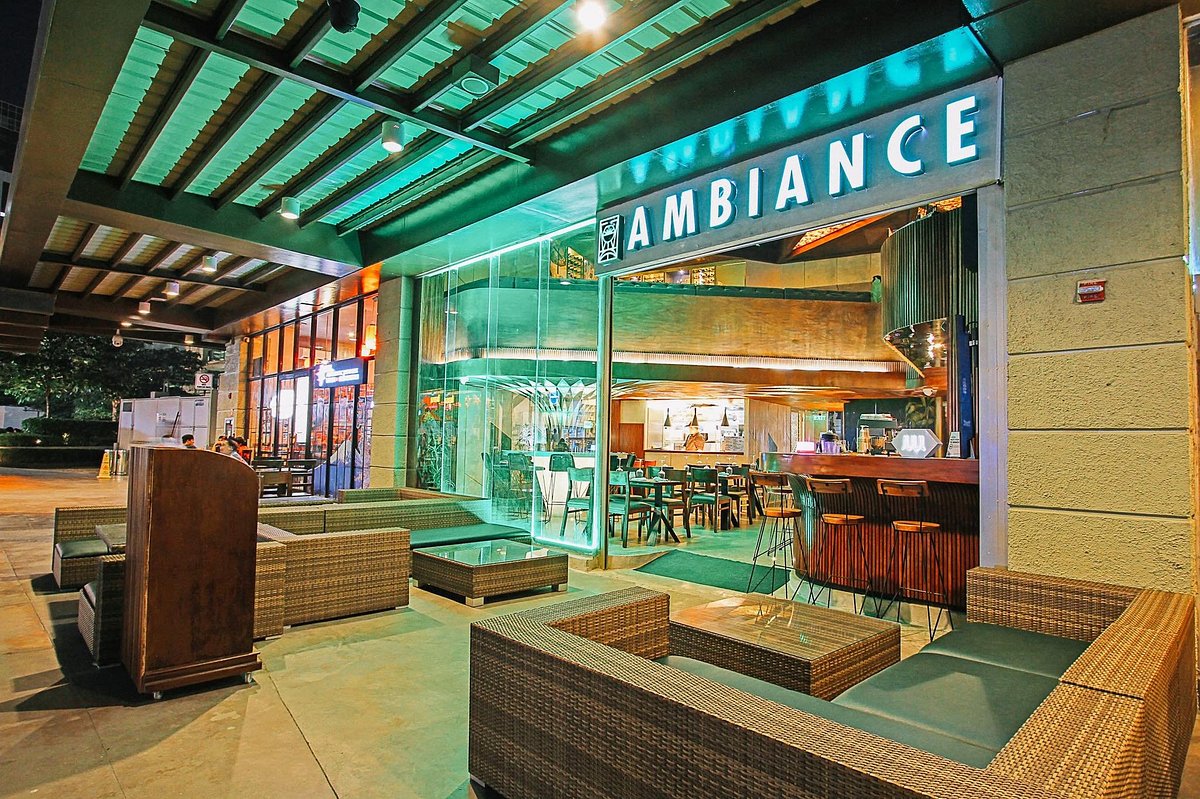Asian Restaurant ISB: A Must-Try Area for Food Lovers in Islamabad
Asian Restaurant ISB: A Must-Try Area for Food Lovers in Islamabad
Blog Article
Savor Genuine Asian Food With a Pan-Asian Spin for a Culinary Adventure
Getting started on a culinary journey via genuine Asian food, enhanced with a Pan-Asian twist, supplies a special possibility to explore the abundant tapestry of tastes that define the area's diverse culinary customs. As you ponder these enticing meals, consider the cultural stories and historical influences that shape them, each bite using a story waiting to be uncovered. Instagrammable restaurants Islamabad.

Discovering Pan-Asian Flavors
In the world of international gastronomy, Pan-Asian cuisine sticks out for its remarkable diversity and the unified interplay of tastes from numerous Asian cultures. This cooking method commemorates the abundant practices and one-of-a-kind ingredients found throughout the continent, creating a tapestry of tastes that is both interesting and rewarding. Key to Pan-Asian cuisine is its ability to stabilize different flavors-- wonderful, salty, spicy, and sour-- while highlighting the freshness and quality of each active ingredient.
From the umami-rich soy sauce of Japan to the intense chili peppers of Thailand, Pan-Asian cuisine provides a substantial palette of tastes. These aspects are commonly incorporated in inventive methods, improving recipes with layers of intricacy. For example, the use of aromatic herbs such as lemongrass and cilantro, usual in Vietnamese and Thai cuisine, adds a refreshing illumination to meals, while the incorporation of coconut milk provides a velvety, abundant structure.
The emphasis on fresh produce and aromatic seasonings ensures that each dish is not only a feast for the preference buds but additionally for the detects. Pan-Asian cuisine welcomes diners to begin on a cooking journey, exploring the substantial and differed landscapes of Oriental gastronomy with every bite.
Combination Dishes to Attempt
While Pan-Asian food is commemorated for its standard tastes, the modern culinary landscape is significantly accepting blend recipes that blend these traditional components with impacts from various other areas. This cutting-edge approach not just honors the abundant heritage of Eastern cooking arts but likewise presents unique taste experiences that attract contemporary tastes.
An archetype of such a combination meal is the Korean-Mexican taco, where marinaded bulgogi beef is wrapped in a warm tortilla, topped with kimchi and a spicy gochujang-infused salsa. This mix marries the vibrant, savory tastes of Korea with the lively, fresh aspects of Mexican cuisine. Likewise, sushi burritos have gained popularity, integrating the delicate creativity of Japanese sushi with the hearty, hand-held ease of a burrito, typically featuring fusion components like tempura shrimp and avocado with a drizzle of wasabi mayo.
An additional notable meal is Thai curry ramen, which infuses the creamy, fragrant seasonings of Thai curry right into the reassuring broth of traditional Japanese ramen, creating a harmonious mix that entices the detects. These combination meals extend past mere novelty; they stand for a culinary dialogue between cultures, urging expedition and advancement on the planet of Pan-Asian food.
Necessary Components and Flavors
To genuinely value Pan-Asian cuisine, one should understand the essential components and spices that develop its structure. This varied cooking style draws from Source an abundant tapestry of Oriental practices, employing an unified blend of tastes and textures.
Fragrant components are essential, with lemongrass, garlic, and ginger being common across different Pan-Asian dishes. These ingredients provide a great smelling base that enhances the complexity of tastes. Flavors such as celebrity anise, cardamom, and cinnamon introduce heat and personality, resembling impacts from areas like China and India.
Food Preparation Methods and Tips
Mastering the art of Pan-Asian food needs knowledge with its distinct food preparation strategies, each adding to the vibrant tapestry of tastes this culinary practice is celebrated for. Central to these methods is the stir-fry, a quick food preparation strategy that preserves the dietary honesty and dazzling colors of ingredients. Making use of a frying pan, the stir-fry approach enables for also warm distribution, important for achieving the characteristic texture and flavor equilibrium of Pan-Asian meals.
One more basic strategy is steaming, specifically widespread in Chinese food. This mild approach keeps the all-natural flavors and nutrients of ingredients, making it optimal for seafood and vegetables. Dumplings, a beloved staple, usually take advantage of steaming, causing soft, succulent structures.
Grilling, likewise essential, imparts great smoky depths to meals such as Korean bulgogi or Japanese yakitori (asian Extra resources restaurant isb). This technique usually entails marinating components, enabling tastes to permeate deeply prior to food preparation over an open flame or warmer
Lastly, mastering the art of stabilizing flavors-- pleasant, sour, salty, bitter, and umami-- is critical. Correctly layering these elements can boost a meal from normal to extraordinary, providing a facility and satisfying cooking experience that embodies the significance of Pan-Asian cuisine.
Dining Experiences Worldwide
Around the world, Pan-Asian food supplies an unequaled dining experience, celebrated for its abundant tapestry of tastes and lively discussions. This culinary phenomenon has actually transcended cultural More about the author borders, catching the hearts and palates of food enthusiasts worldwide. In worldwide cities fresh York, London, and Sydney, Pan-Asian restaurants work as fusions where cooking practices from Thailand, Japan, China, and past merge, providing restaurants with an eclectic mix of dishes that highlight the region's diversity.
The global allure of Pan-Asian food hinges on its capacity to use both credibility and innovation. Cooks skillfully wed typical ingredients such as lemongrass, soy sauce, and miso with modern methods, resulting in dishes that are both familiar and refreshingly brand-new. This combination enables restaurants to begin on a culinary trip that appreciates heritage while embracing modernity.
Moreover, dining experiences are boosted with thoughtfully designed settings that mirror the principles of Pan-Asian looks. From minimal Japanese-inspired insides to dynamic Thai-themed spaces, each restaurant provides an unique setting that matches the cooking offerings. Consequently, customers are not simply eating a meal however partaking in a social experience, making Pan-Asian eating a genuinely global sensation.
Final Thought
The expedition of Pan-Asian cuisine offers an extensive understanding of the detailed interplay of flavors and culinary traditions across Asia. By welcoming blend meals such as Thai curry ramen and sushi burritos, the culinary trip not only highlights the flexibility of traditional components but likewise showcases cutting-edge modern methods. This gastronomic adventure, improved by cooking techniques and vital seasonings, supplies an unique possibility to value the social diversity and culinary creativity that specify Pan-Asian cuisine on a worldwide scale.
Getting started on a culinary trip through authentic Asian cuisine, boosted with a Pan-Asian spin, offers an one-of-a-kind opportunity to discover the abundant tapestry of flavors that define the area's varied cooking practices.In the realm of global gastronomy, Pan-Asian cuisine stands out for its impressive diversity and the harmonious interaction of tastes from numerous Asian cultures. Secret to Pan-Asian food is its capacity to balance different tastes-- sweet, salty, spicy, and sour-- while highlighting the freshness and high quality of each component.

Report this page